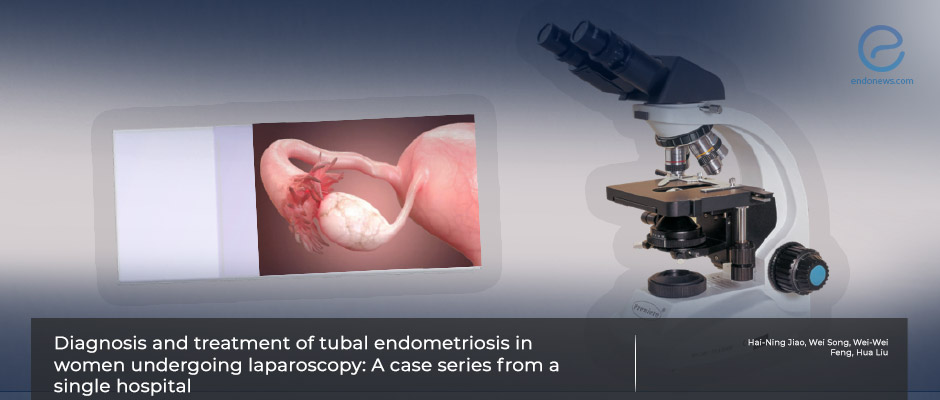Histopathologic examination always has the final word in tubal endometriosis
Apr 5, 2023
The mysteries of tubal endometriosis have not been resolved yet
Key Points
Highlights:
- Although tubal endometriosis is a well-known clinical entity, it is difficult to diagnose during surgery and is usually detected by histopathology-microscopic examination after surgery.
- The mysteries of tubal endometriosis have not been resolved yet, but the correlation between tubal and ovarian endometriosis needs special consideration.
Importance:
- Both infertility and endometriosis management may benefit from research projects assessing the role of fallopian tubes and the anatomical location of extra-ovarian endometriosis in patients with infertility and pelvic discomfort.
What's done here:
- This is a retrospective study where the data of 30 patients who underwent laparoscopic salpingectomy due to various gynecological conditions.
- The histopathological detection of tubal endometriosis following surgery was analyzed.
Key Results:
- In patients with clinical symptoms of dysmenorrhea or infertility, a salpingography, and laparoscopic exploration seem wise.
- The ultrasound may only suggest the existence of ovarian endometriosis. Additional fallopian tube abnormalities and to detect/manage coexisting tubal endometriosis should be evaluated.
- Further research on tubal endometriosis will open new horizons for the treatment of female infertility and other diseases and has a very important clinical impact.
Potential limitations of the study:
- Among 1982 endometriosis patients of the hospital patient data, 30 with identifiable tubal involvement is quite a small number.
- Due to the retrospective nature of the study, it is hard to assess the effects of salpingectomy in relieving pain since patients had additional endometriosis in other pelvic organs as well.
Lay Summary
Hai-Ning Jiao and coworkers from the Department of Obstetrics and Gynecology of Shanghai Jiao Tong University School of Medicine, China, reported the salient features of 30 tubal endometriosis cases in the World Journal of Clinical Cases.
Tubal endometriosis is characterized by ectopic endometrial glands and/or stroma within any part of the uterine tubes. It is notoriously hard to diagnose and is generally detected by histopathologic examination of tissues removed, i.e., microscopic assessment, postoperatively.
This retrospective study, among the data of 1982 endometriosis patients yielded histopathologically confirmed 30 tubal endometriosis cases who underwent laparoscopic salpingectomy for various gynecological diseases. The study aimed to assist in yielding new ideas for the treatment of female infertility and other diseases.
Histopathologic examinations of the resected uterine tubes revealed only 2 patients having tubal endometriosis without any other gynecological diseases, the rest had one or more additional pathologies. The endometriotic lesions of the unilateral fallopian tube and unilateral ovary were ipsilateral. One patient showed left tubal endometriosis along with a left rudimentary uterine horn and ipsilateral ovarian involvement. The rate of tubal endometriosis combined with another endometriosis involvement was significantly higher than that of other gynecological pathologies, possibly indicating a relevant combination.
In patients with clinical symptoms of endometriosis, a salpingography, and laparoscopic exploration would seem logical, even when the ultrasound images may only suggest ovarian endometriosis. This policy may facilitate seeing whether there are additional fallopian tube structure abnormalities and detecting any coexisting tubal endometriosis via histopathologic examination.
Potential limitations exist in this retrospective study. First, the recorded data of 1982 endometriosis patients yielded only 30 with identifiable tubal involvement which seems to be a low figure. Besides, due to the retrospective nature of the study, it seems hard to assess the effects of salpingectomy since patients had additional endometriosis in other pelvic organs as well.
Further research on tubal endometriosis will open new horizons for the treatment of female infertility and other diseases and so has a very important clinical impact.
Research Source: https://pubmed.ncbi.nlm.nih.gov/36483829/
tubal endometriosis histopathology fallopian tubes ovary laparoscopy infertility

